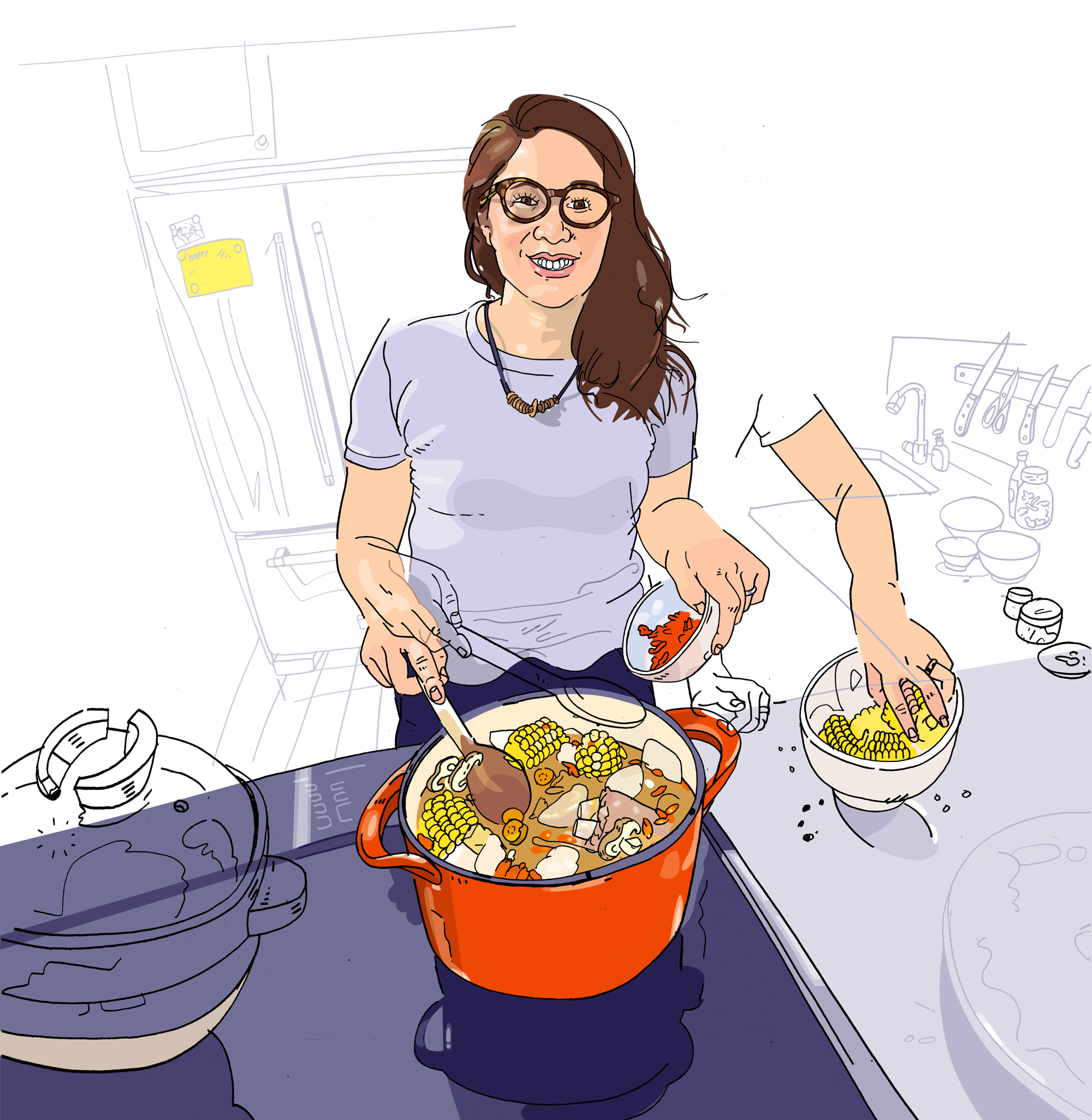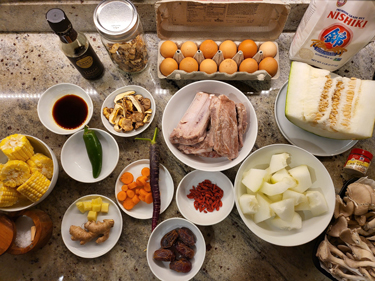
Locally grown Locally grown Locally grown
Washington native Marie Spiker is an assistant professor of epidemiology, registered dietitian and enthusiastic kayaker. We asked her about her various passions.
Illustration by Olivier Kugler | December 2021
“I was born and raised in Kitsap County. I came to the UW through the Washington Scholars Program, which gave me full tuition and fees. That grant really kept me in the state, kept me at the UW.
“I was a dual-degree student in public health and anthropology. One of my favorite courses was Anthropology of Food, taught by a graduate student. It really appealed to me and having a grad student teacher opened my eyes to this career pathway. I started thinking about graduate school.
“A Bonderman Travel Fellowship allowed me to spend a year between finishing at the UW and starting at John’s Hopkins exploring food and farming. Some organizations connected me with small-scale and family run farms where I had hands-on farming experiences. Most of my travels were in South America and south Asia. Learning about different ways of living, farming and eating gave me great perspective going into graduate studies.
“I’m mixed-race Asian American; my mom is from Malaysia and my dad comes from a family of Midwest farmers who came to the west coast to work in plywood mills.
“I recommend having an active relationship with your fridge. I uses strategies to honor the food and reduce waste. Things like cilantro, parsley and green onions I treat like flowers and store in a jar of water. The things I need to use soon, I try to make as visible as possible. Zucchini is where I see it every time I open the door.
“One of my favorite things to cook and eat is a clear broth soup. … The love of soup I get from my mom, especially soups with bitter herbs, certain greens, hearty vegetables and bone broth—my favorite is to use pork ribs.”
Winter Melon Pork Bone Soup
By Marie Spiker
You may find winter melon in your local Asian grocery store—either sold as an impressively large whole gourd or sliced into large wedges wrapped in plastic. In soup, winter melon is refreshing and light, a good complement to a clear broth. This soup is often served as one course of a larger meal, but I often cook it as a stand-alone dish that I serve with rice, garnished with cilantro or scallions, and a dipping sauce for the pork of soy-sauce and jalapeños.
My version of this soup represents an amalgam of dozens of other recipes, phone calls to family and my own preferences. It is versatile, and so many ingredients can be dropped or substituted. If you were to omit the shiitake mushrooms, ginger, carrot, corn and goji berries, this soup would still be flavorful and complete. Other ingredients like frozen bones you’ve been saving for stock, dried red dates or fresh oyster mushrooms all work well here. I like cooking a pork bone broth, but you can substitute chicken. Here the focus is winter melon, but I have also substituted opo squash or wild watercress as the star vegetable. I have heard of people substituting winter melon with chayote, zucchini, bottle gourd, old cucumber (yellow gourd) or even watermelon rind—your mileage may vary! Explore something new, make good use of what you have on hand and experiment with different ingredients that are available to you as the seasons change!

Marie Spiker’s pork bone broth.
Prep time: 20 minutes
Cooking time: 1 hour 20 minutes
Ingredients

The recipe is versatile enough to mix and match several ingredients.
For the soup
- 8 dried shiitake mushrooms (I prefer dried over fresh; drying unlocks umami flavor!)
- 2 pounds pork ribs (I use spare ribs, but any other type of rib or any other cut of bone-in pork will work)
- 2 carrots, sliced into rounds or half moons
- 2 inches ginger, sliced into thick discs and then smashed
- 1 whole corn on the cob cut into 4-5 segments
- 2 pounds winter melon (approximately 2 large slices), seeds removed and diced into 1-inch cubes
- 1 tsp dried goji berries
- Salt
- White ground pepper
- Optional for serving: chopped cilantro or scallions
For the sauce (to dip the pork)
- 1 jalapeño, sliced into thin rounds (with or without seeds, your choice!)
- 1 cup soy sauce
Directions
- An hour before cooking, soak the shiitake mushrooms in water. The water will be flavorful, and you can add it to the soup stock later.
- Prep the soy-sauce and jalapeño dipping sauce: Place the sliced jalapeño in 1 cup of soy sauce. I leave it in a jar in the fridge so it’s ready when the soup is done, and if you have extra you can use it with other meals throughout the week.
- Make the stock: In a large pot bring 12 cups of water to a boil. Add the pork ribs, let the ribs be at a rolling boil for 10 minutes and then skim any fat or scum that rises to the top. Then reduce the heat to medium-low and add the smashed ginger, sliced carrots and pre-soaked shiitake mushrooms. You can also strain the water you used to soak the shiitake mushrooms and add it to the pot. Let the stock simmer on medium-low, covered, for 60 minutes. Check the pot regularly and add water as needed.
- Add the vegetables: Add the sliced corn, cubed winter melon and goji berries. If you have other fresh ingredients you want to use–like fresh oyster mushrooms—this is the time to add them. Simmer for 15-20 minutes or until the winter melon is translucent. You want the winter melon to be soft but not mushy. If you wish, season with salt and ground white pepper to taste.
- Serve the soup hot. You can serve it alone or with rice (I prefer jasmine). If you have any on hand, top with chopped cilantro or scallions. As you eat the pork—which should be falling off the bone— dip it in the soy-sauce and jalapeños that has been chilling in the fridge.